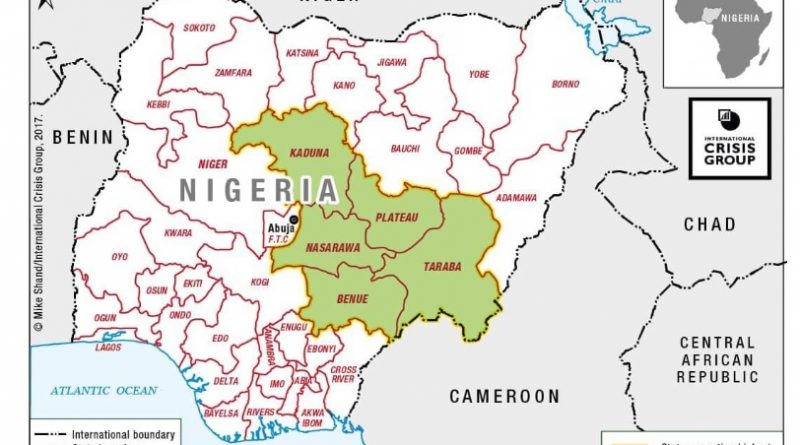Should violent clashes resume before herders, farmers’ debacle is fixed?

It would appear there is relative calm in farming communities, as violent clashes between cattle herders and crop farmers have either reduced significantly or simply not making it to the news cycle.
However, as experts have said over time, lasting solutions need to be put in place to ensure the two sides, who are both farmers anyway, can thrive without one side threatening survival of the other.
Persistent violence between farmers and pastoralists (popularly called herdsmen) in Nigeria has contributed to more than 7,000 deaths in the past five years and costs the Nigerian economy $13 billion every year. Communities in the Middle Belt that once cooperated over natural resources are competing for increasingly scarce land and water as climate change intensifies, sparking migration further south in search of available resources. Underdevelopment and poor governance further contribute to a breakdown in traditional agreements, and farmer and pastoralist communities are fast becoming polarized as clashes take on religious and ethnic overtones, according to a 2019 report by Mercy Corps.
Another report in 2017 by the International Crisis Group also noted that escalating conflicts between herders and farmers are among Nigeria’s most pressing security challenges. This could potentially generate bloodshed on an even wider scale unless President Buhari’s government makes ending this violence a national priority.
The herdsmen-farmers violence generated very heated discourse up until this time last year, with a lot of anger being expressed at the loss of lives and property. More important has been the need to map out innovative, feasible alternatives in the cattle business. It had been stressed in several fora that cattle rearing needs to become a business, one driven by the private sector, and not by the government setting up ranches (in whatever guise).
The debate over the best approach to this crisis appeared to have gone silent in the weeks leading to the 2019 general elections, but the problem surely has not been solved and needs to be addressed before rearing its ugly head again.
Apart from the Federal Government, the ICG report further stated that state governments also need to formulate and implement steps to address the needs and grievances of all sides transparently and equitably. Strengthening law enforcement, supporting local conflict prevention and resolution mechanisms, establishing and protecting grazing reserves would all make a significant and immediate difference. In the longer term, the greater challenge will be curbing the arms influx and, crucially, addressing the environmental trends that are forcing herders south. Failure would spell greater danger for a country already battling other severe security challenges and, potentially, for the wider West and Central African region.
Nigeria has been estimated to have 19 million cattle herds, which on a conservative estimation of N100, 000 per cattle translates to N1.9 trillion. This figure has not changed for some years and it is unclear how much or less the true figure could be. The cattle market is nevertheless filled with immense potential, not only for beef but also dairy production.
It has been observed that Nigeria mostly imports cattle from other countries for local consumption as locally bred herds are unable to meet consumption needs. 70 percent of the cattle business in Nigeria is said to rely on herd being brought from; Cameroun, Chad, Burkina Faso, Mali, Niger and even Benin Republic.
Akinwumi Adesina, former Minister of Agriculture and Rural Development, had projected an increase in beef consumption in the country from 360,000 tonnes pre-2015 to 1.3 million tonnes by 2050.
Lagos alone, according to Akinwunmi Ambode, former governor of Lagos state, is consumes 6,000 herds of cattle daily, which may increase to 8,000 around 202, translating to present consumption of 2.19 million cattle annually in the state.
As demand for cattle products increase, the need for more cattle to be reared will equally increase. With it is likely continuation of the cycle of violence, unless a definite national strategy is implemented to make the industry thrive as a business, such that each person involved should be willing to invest in it, to keep the cattle in safe enclosures and produce feed for them.
The decision by herdsmen to migrate in search of greener pastures has often been described as counterproductive. The north south movement, and later the south north movement in search of pasture, consistently leads to losing whatever weight has been gained during grazing periods. In the dry season, cattle could potentially lose as much as 50 percent of their weight, if there is no adequate feeding.
“Within the confines of the ranch, the animals can be sustained. You will be sure you can get feed and water for them, providing all these within the ranch. That then will minimise the movement outside the ranch in search of water and feed, in the course of which destruction of farmlands and communal clashes occur,” Chryss Onwuka, a professor of ruminant animal nutrition told BusinessDay in a previous interview.
Cattle in ranches can be fed through three major methods, the continuous grazing, where cows are in the same paddock for the whole grazing season; rotational grazing where cows are rotated around several pastures, usually on a set rotation; and lastly, the Management Intensive Grazing (MIG), where cows are moved to a new paddock only when it has fully re-grown.
Feeding for the cattle has been a contentious issue, which even prompted a comment by Audu Ogbeh, former minister of agriculture, that the federal government wanted to import grasses for pasture cultivation in the country. That, like several other planned interventions, laudable or laughable, now appear to have become forgotten discussions the country needs to have in mapping out a solution, and quickly too.
CALEB OJEWALE



![Agbenu Kacholalo: Colours of culture at Idoma International Carnival 2019 [PHOTOS] Agbenu Kacholalo: Colours of culture at Idoma International Carnival 2019 [PHOTOS]](https://exactnewz.com/wp-content/uploads/2020/02/sTF7t2eV-390x205.jpeg)